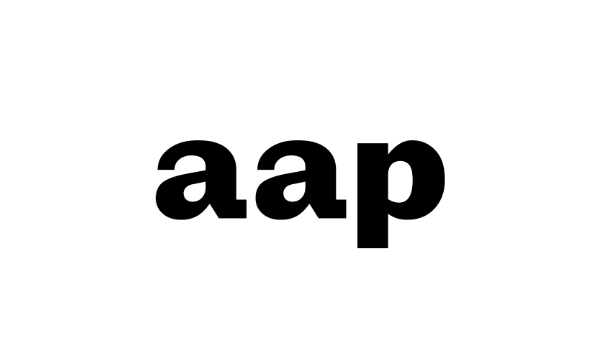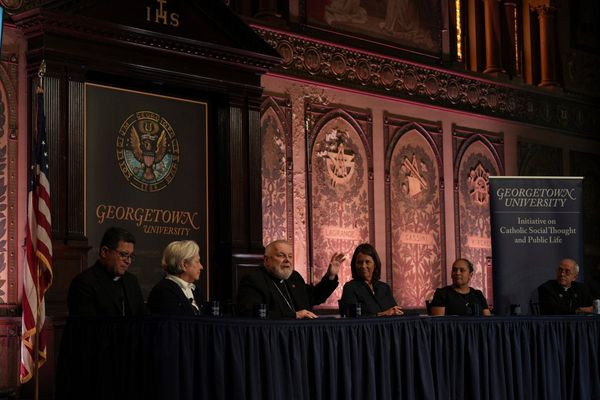
Fee-free Tafe has become a major talking point for Labor before the federal election, repeatedly touted by the prime minister as providing cost-of-living relief to half a million Australians.
“We’re very conscious about those cost-of-living pressures,” Anthony Albanese told reporters in early January. “That’s why we have introduced a range of measures, including fee-free Tafe.”
The education minister, Jason Clare, took to X this week to compare Labor’s bill to legislate taxpayer-funded Tafe places with the Coalition’s commitment to provide tax breaks for business lunches.
“Compare the pair,” his post read. “Free Tafe for tradies [versus] free lunch for bosses.”
But what is the bill, and why has it become divisive?
How would free Tafe work?
Jobs and Skills Australia estimates about 40% of new jobs expected to be created in the next decade will require a VET qualification, but the latest data, released on Wednesday, shows the long-term enrolment trends are tracking downwards. In–demand jobs such as nursing, child, aged and disability care, electricians and construction all have VET pathways.
Some 26.8% of 15 to 19-year-olds were taking part in VET in 2023, compared with 29.6% in 2015.
The Free Tafe bill would provide ongoing funding to the states and territories from 2027 for at least 100,000 fee-free course places a year, prioritising equity cohorts including First Nations people, women, youth, people out of work or receiving income support, unpaid carers and people with disability and areas of “high workforce demand” such as housing, care, early childhood education and defence.
It legislates the commonwealth’s current $1.5bn fee-free Tafe program, which has enrolled about 568,000 students since it began in 2023. It was due to expire at the end of 2026. Diplomas typically take two to three years to complete, with courses costing $10,000 to $20,000 in total.
More than 60% of people who have taken up the program are women and about 30% are in regional Australia. Aboriginal and Torres Strait Islander enrolments represent 5.9% of enrolments despite accounting for about 3.8% of the total population.
Who’s opposed?
The Business Council of Australia was an initial backer of the fee-free Tafe program but has since cautioned against legislating it as an enduring feature of the VET system.
In its submission to a Senate inquiry into the bill, the BCA chief executive, Bran Black, warned it was “too early” to assess the impact of fee-free Tafe, with little public data available on completion rates given courses typically took three to four years. He recommended delaying the legislation until more evidence on its effectiveness was available, as did the Australian Chamber of Commerce and Industry.
Black said stakeholders had indicated fee-free places had a completion rate of approximately 20-30% lower than the average VET completion rate – while also placing undue pressure on a system already struggling with capacity issues.
Registered Training Organisations (RTOs) consultant Wendy Cato said free Tafe programs hadn’t proven to be the “panacea” some had hoped for.
“While free Tafe was introduced with the noble aim of addressing skills shortages and promoting equitable access … the evidence from multiple sources suggests that it is fraught with inefficiencies, quality concerns and systemic problems.”
The National Centre for Vocational Education Research flagged in its submission that while it didn’t collect data on free Tafe, its existing systems could provide detailed reports if requested.
How has the education sector reacted?
Universities remain split on whether the government should adopt the bill.
The Group of Eight, which represents Australia’s prestigious sandstone institutions, supported its “broad intent” but cautioned whether fee-free policies would “create disincentives” for students to pursue Tafe over a bachelor degree.
The peak body for the sector, Universities Australia, called for strengthened data collection and reporting to evaluate its effectiveness, while RMIT, Federation University, Charles Darwin University and Central Queensland University all backed the bill. They all pointed to the need for adequate resourcing, including for infrastructure and staffing to meet growing demand, particularly in regional areas.
The Independent Tertiary Education Council Australia, which represents private providers, said the bill was “unnecessary”, risked undermining the existing system and locked in funding for “underperforming public Tafe colleges”.
It called for private RTOs to be included in the funding, pointing to student satisfaction data which was marginally in favour of the independent sector.
Who’s backing it?
The bill has received strong support from state governments and major unions, including the Health Services Union, the Nursing and Midwifery Association, teachers’ unions and the Australian Council of Trade Unions (ACTU).
In its submission, the ACTU called criticism over a lack of accountability over completion rates “laughable”, adding other policy levers were in place to specifically address apprentice retention and pay increases for VET carers.
“Free Tafe cannot do what it is not designed to do. The Free Tafe program is not designed to increase completion rates, which have languished at near-record lows for a better part of a decade, and so to criticise it for not doing so is laughable.”
Peter Dutton has just announced free lunches for business leaders but he does not support free TAFE for everyone else. It seems he has no problem with tax payer funded free stuff so long as it’s just for bosses.
— Sally McManus (@sallymcmanus) January 19, 2025
It also said calls to extend free Tafe to private providers were “bizarre”.
“Expanding this program to non-Tafe providers would create serious risks not only to the quality of the education that this program delivers, but also to the security and probity of public money,” its submission read.
“While we acknowledge that the government has taken significant steps to clean up the sector, including the introduction of new, more stringent standards, we believe there are still some bad actors operating in the VET sector.”
Late last year, the VET regulator issued cancellation notices to four non-government RTOs for issuing attainments without prior compliance assessments.
What happens next?
The Coalition has indicated it won’t support the bill as it is unfunded and would be a “huge financial commitment”.
Addressing parliament last November, the shadow minister for skills and training, Sussan Ley, said despite supporting VET she was “shocked” Labor hadn’t provided financial costings for the bill.
TAFE is not all vocational education and training.
— Sussan Ley (@sussanley) November 4, 2024
TAFE is just the state government run public training provider.
Labor’s approach to skills is akin to only funding state run public schools and refusing to fund non-government schools.
We should not accept that.
The Department of Employment and Workplace Relations’ submission, uploaded this week, said funding would be determined through the federal budget.
It said Labor had committed $253.7m a year from 2027 to pay for at least 100,000 fee-free Tafe students in its latest mid year economic and fiscal outlook, and an additional $1.3bn to 2035.
With the Greens’ backing, it will require crossbench support to pass the Senate.
The committee will hand down its report by the end of February. If legislated, the minister for skills and training, Andrew Giles, has flagged it will be “the starting point” for further collaboration between the government and the states on VET.







